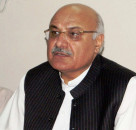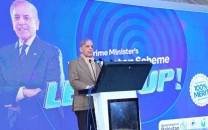Price movements: India’s wholesale inflation eases but no rate cut seen
Higher consumer inflation means interest rates will probably stay on hold.

India’s wholesale price inflation hit a five-month low in July, data showed, but steep retail price growth means the central bank is unlikely to cut benchmark interest rates soon.
The Wholesale Price Index, closely watched to assess price rises in India, increased 5.19% from a year earlier – slightly above market forecasts of a 5.1% rise – after climbing 5.43% the previous month.
The July reading was the weakest since January thanks to lower fuel prices.
But higher-than-expected consumer inflation reported earlier in the week means interest rates will probably stay on hold until at least the end of 2014, economists said.
Business has been clamouring for a cut from the steep level of 8% to help spur a sluggish economy.
“I don’t see any rate cuts this year at all,” DK Joshi, chief economist at credit rating agency Crisil, told the media.
India has the highest borrowing costs among Asia’s major economies, discouraging investment and jeopardising revival of the economy mired in its longest spell of sub-5% growth in a quarter-century.
While still keenly watched, the Wholesale Price Index has been ceding ground to the Consumer Price index as a measure used by the central bank to set monetary policy.
The Consumer Price Index, which more closely reflects consumers’ retail costs, rose by a higher-than-expected 7.96% in July from a year earlier, far above the central bank’s target of 6% by 2016.
“This 6% consumer price inflation target means the central bank cannot loosen rates,” Joshi said.
The economy grew 4.7% last financial year, just under half the pace recorded a few years ago. India’s new right-wing Prime Minister Narendra Modi rode to power in elections in May on promises of reviving the economy.
Recent growth indicators have been contradictory, with industrial production expanding just 3.4% in June, undershooting market forecasts.
But other data surveys giving more current snapshots of economic activity have been more favourable.
“Mixed signals will continue to emanate from the Indian economy for coming months,” said Arun Singh, senior economist at credit data firm Dun & Bradstreet. Annual monsoon rains running at 18% below average are another uncertainty hanging over the economy. The below-normal rains threaten to damage crops, stoke food inflation and act as another restraint on growth.
Published in The Express Tribune, August 15th, 2014.
Like Business on Facebook, follow @TribuneBiz on Twitter to stay informed and join in the conversation.



















COMMENTS
Comments are moderated and generally will be posted if they are on-topic and not abusive.
For more information, please see our Comments FAQ